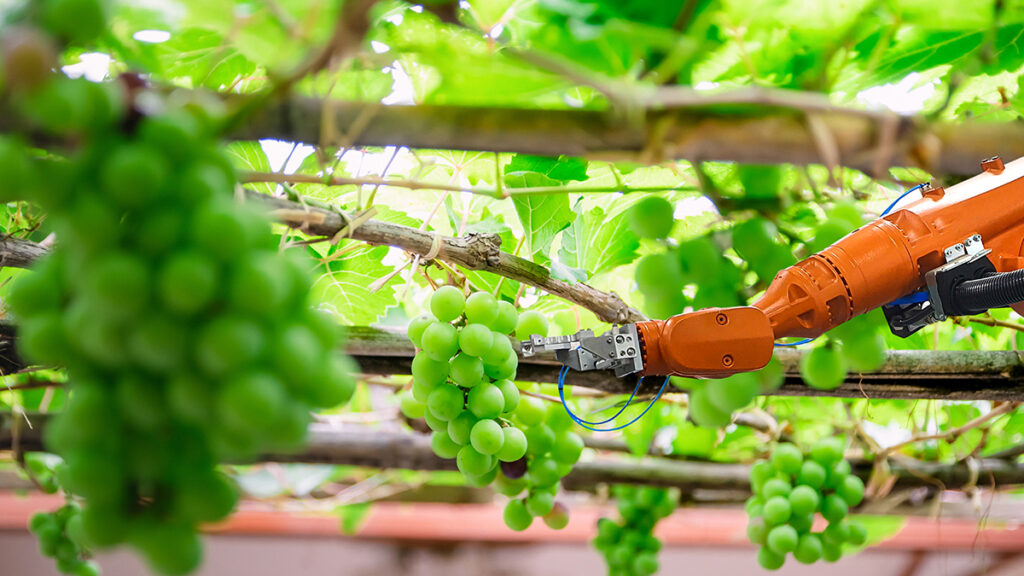The field of agriculture is undergoing a revolution of sorts, one that is continually being brought on by the integration of robotics technology. The once-traditional way of farming has been changing gradually, with farmers adopting modern farming techniques to enhance animal and crop yields as well as overall agricultural productivity. Robotics has been at the forefront of this transformation, with the development of sophisticated machines that can perform various agricultural tasks with greater efficiency and precision than human approaches. The use of robotics in agriculture has the potential to flip the industry on its head, making farming a more sustainable, efficient, and profitable process.
Applications of robotics in agriculture
With a considerable portion of agricultural work being monotonous and labour-intensive work, it is ripe for automation and robotic integration. The applications of robotics can be seen in almost all areas of the agricultural landscape – automation can be applied to farm vehicles such as tractors, combine harvesters, or transports, to the fields for planting, seeding, monitoring, weeding, and harvesting, to animals for monitoring, harvesting, and feeding processes, or even to automate entire indoor processes.
Robotics in crop harvesting
Crop harvesting would, on the face of things, be the automatic assumption for automating agriculture using robotics, but more goes into the process than meets the eye. Whilst it is most certainly true that harvesting crops is demanding and repetitive work, the kind of labour that is typically being replaced by automation, there is also the finesse of only harvesting crops that are ripe as well as handling them with the appropriate levels of precision and delicacy required.
However, this hasn’t stopped the development of such machines, with many of the benefits outweighing the negatives of producing them. For example, robotic crop harvesters can work around the clock, in a precise and consistent manner, whilst also reducing costs in the long term.
Robotics in weeding and maintenance
Proper maintenance of crops is one of the most challenging, time-consuming, and costly processes when it comes to the field of agriculture, having plenty of weeds of its own that need to be plucked. This is why weed-management and mowing robots, including those which incorporate AI, are becoming an ever-attractive option.
Through the use of robotics, farmers can effectively control weeds in their fields in a cost-effective manner, whilst also avoiding the use of pesticides and other weed-killing chemicals, something that is of significant importance today.
Robotics in greenhouses
Greenhouses are one of the most likely sectors of agriculture to see a drastic implementation of robotics and automation, with the potential for entirely automated greenhouse farming in the future. Robots can automate planting, maintaining, weeding, harvesting, and climate control to produce consistent and high-quality results in greenhouse environments. Looking to the future, the increasing popularity of vertical farms could also see this sort of farming spread at an increased rate.
The benefits of this are considerable, with current tests of these processes showing improvements to water usage and crop quality whilst also removing the need for pesticides given the highly controlled environment of a greenhouse.
Robotics in agricultural monitoring
The monitoring of fields, greenhouses, and animals is one of the most integral parts of successful agriculture endeavours and as robotics expand, so to do their uses in these roles. Robots can collect vast amounts of data in a fraction of the time traditional methods would take. For instance, drones equipped with sensors such as cameras, spectrometers, LIDARs, and other sampling instruments can provide invaluable data regarding crop quality and yield, pest and disease detection, crop management, and animal tracking. Additionally, drones and other robotics can be used to effectively map and monitor large amounts of farmland in a readable method to provide consistent and reliable insights.
Once again, this is another sector of agriculture that can see considerable benefits through the implementation of robotics. By providing accurate and timely data on crop health and monitoring, pest and disease infestation, and land mapping, robots can help farmers to make informed decisions that can lead to increased yields, reduced costs, and improved sustainability.
Robotics in husbandry
Whilst it is certainly one of the more controversial topics in the implementation of robotics in agriculture, with many arguing its ethics, robotics are also being used in the care and farming of animals. Robotic systems can be used in a variety of ways to improve the efficiency and effectiveness of husbandry operations. For example, robots can be used to automate feeding and water tasks or for monitoring and managing animal health. Automating the feeding and watering processes reduces time and cost spent in manual labour and delivers precise amounts every time. Sensors can be used in the monitoring of animals to detect signs of illness or disease or to monitor the vital signs of livestock more effectively. This information can then be used to make informed decisions about treatment and prevention strategies. On top of this, robots can also be applied to specialised applications such as the milking of cows or the shearing of sheep. Automated milking systems have been shown to improve milk yield overall whilst also reducing costs, for example.
There’s also plenty of other robotics editorial at IoT Insider’s sister publication, Electronic Specifier. And you can always add to the discussion at our comments section below or on our LinkedIn page here.
